Labor unions are currently under attack. An increasingly hostile Supreme Court and a multitude of anti-labor laws across the nation have put labor unions in jeopardy. Anti-labor groups understand the power of unions, and relentlessly fight against union progress. They have had many successes, advocating for anti-labor justices on the Supreme Court and passing right to work laws in 27 states. However, California remains a beacon for worker’s rights. California labor unions have shaped public policy for decades and have acted as a countervailing force against corporations and moneyed interests. They have played an important role in just the last ten years, lobbying for minimum wage, climate and health care reform legislation.
HOW WE GOT HERE: The Rich Have Resisted Collective Bargaining–Why?
Labor unions in California have a storied history. The Industrial Workers of the World (IWW) was founded in Chicago in 1905 and quickly spread to California. The members, often called “wobblies,” were focused on securing free speech and better working conditions through direct action. According to Elaine Elison and Stan Yogi in their book Wherever There’s a Fight, wobblies would “stand on a street corner to speak… denouncing the greed of the bosses.” They would then be arrested, and “another would take his place” until all the jails were full. In 1911, the Fresno California board of trustees approved a law that “criminalized public speeches, lectures, or discussions of any kind in any public [place].” The law was intended to clamp down on union organizing efforts. A blatant violation of free speech, it was only overturned because the Fresno town fathers feared an invasion from a “hobo army,” a collection of IWW workers coming from across the country to voice their displeasure with the law.
During the mid-twentieth century, union membership bloomed magnificently. The Roosevelt administration passed the National Labor Relations Act, codifying workers’ right to organize and to collectively bargain with employers. Union membership ticked over 30% in 1947, during the postwar boom era.

Union membership is inversely correlated with wealth inequality, another reason why the top 1% want to crush unions. When more Americans are a part of a union, the working class gets a larger share of the pie.
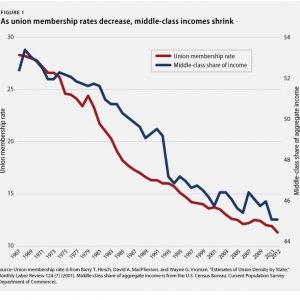
Filling in the Gaps: Cesar Chavez’ fight for equality for California Farmworkers
Nevertheless, California farmworkers didn’t achieve much success in exercising their collective bargaining power until the 1960’s. These workers were excluded from minimum wage laws, and often didn’t have the financial and educational knowledge to exercise their rights. A young activist by the name of Cesar Chavez sought to change that.
Chavez dropped out of school in the 8th grade and served in a segregated unit of the U.S Navy. After getting out of the service, Chavez turned his focus to the plight of Mexican American farmworkers in the central valley of California. Inspired by Gandhi’s work in India, Chavez founded the National Farm Workers Association (NFWA). In 1965, Chavez led the grape strike against grape growers in California. The strike merged into a nationwide boycott of California grapes, and lasted about five years. Chavez led a walk from Delano to Sacramento to protest working conditions on California farms, gaining national attention for the movement. The movement’s crowning achievement was the passage of the Agricultural Labor Relations Act in the California state legislature in 1975. The Agricultural Labor Relations Act allowed farmworkers to unionize and negotiate for better working conditions. Cesar Chavez became a civil rights icon, demonstrated in part by the fact that all California public employees receive Cesar Chavez day off in March. Little did Chavez know that this landmark piece of legislation would be obliterated by the Supreme Court nearly a half century later, and much of the progress of his movement would be reversed by six conservative justices.
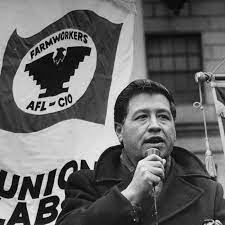
The Robert’s Court War on Labor
In recent years the labor movement has been subject to increased antagonism by the U.S. Supreme Court. The 2018 Janus decision and the 2021 Cedar Point case are two excellent examples of how hostile this court is to labor interests. In 2016, Mark Janus, an employee in the Illinois Department of Public Health sued the American Federation of State, County, and Municipal Employees (AFSCME), the union representing him. The court, in a 5-4 decision, held that compelling Janus to pay the agency fees to the union for advocating on his behalf was a violation of his First Amendment freedom of speech. This exacerbates the free rider problem inherent in union organizing because Mr. Janus will benefit from collective bargaining efforts by the union to increase wages and workplace safety, but doesn’t have to pay dues. The decision could have disastrous effects for labor unions in California and across the country. An increase in free riders will spread union funds thin and put them in a worse bargaining position with employers.
In Cedar Point v Hassid, the Supreme Court was asked to look at the aforementioned California Agricultural Labor Relations Act. A crowning achievement of the Mexican farmworkers labor movement in the 1960’s led by Cesar Chavez, the law permitted labor organizers to inform farmworkers on agricultural sites about their collective bargaining rights for up to 3 hours for 120 days a year. Farmer growers associations have despised the law since its passage because unionization of workers cuts into their profits. They would prefer to keep wages low, working conditions just above livable, and ensure farmworkers remain economically dependent on the growers. After years of contemplating how to undo the progress of the ALRA, they finally arrived at the conclusion that the entry of labor organizers onto their property as mandated by the government should be a violation of the takings clause of the Fifth Amendment– which states that private property can’t be used for public use without “just compensation.” Now they just needed a court to agree with their reasoning. That was tough for many years with swing Justice Anthony Kennedy refusing to side with growers. However, after his replacement by Brett Kavanaugh and the subsequent replacement of Ruth Bader Ginsburg with Amy Coney Barrett, the growers had the court they needed.
In a 6-3 party-line vote, the Supreme Court sided with the growers. The conservative majority held that the organizers merely stepping foot on the property constituted a 5th amendment per se taking.
The decision was perplexing on many levels. When most Americans think about Fifth Amendment takings, we think of eminent domain —maybe the government needs to build a road or bridge through your land. In other words, a physical taking of property. The Supreme Court contorted itself in Cedar Point and extended the definition of a per se taking (a fancy way of saying a major intrusion of private property) to mean a labor organizer even stepping foot on a farmer’s land constitutes a physical taking that the landowner would need to be compensated for. The decision in Cedar Point could open the floodgates for all sorts of legal challenges to government regulations such as health and safety inspections and emissions limits. If walking onto a piece of land is a taking, is requiring businesses to not pollute a taking? What about “forcing” businesses to admit all racial groups? Is the government “taking” their right to exclude people? This may seem a little extreme, but a world where the government has to compensate landowners for just stepping foot on their property would be one step away from complete chaos.
What is worse is that many farmworkers won’t have access to exercise their collective bargaining rights. Many of these workers will have to depend on their employers, who have a vested interest in them not unionizing, to provide them information about their right to organize. These workers are unlikely to organize themselves, for many of them do not have full English language fluency nor an understanding of the complex United States legal system.

How California Labor has Fought Back
California labor has fought corporate interests every step of the way. Labor has backed a plethora of California laws to protect workers and promote the common good more broadly. California labor organizations have cleared the path for other states to implement similar policies. All the policies listed below were supported or led by unions in California since 2011:
- In 2016, California passed SB3, becoming the first state in the U.S to raise the minimum wage to $15 an hour.
- In 2014, California passed the California Healthy Workplaces and Healthy Families Act. This bill guarantees 3 days of paid sick leave per year to all California workers
- Labor also advocated for SB17, which requires pharmaceutical companies to “provide advance notice and public justification” for increasing drug prices more than 16% in a given two-year period.
- Finally, labor unions have supported ambitious climate change legislation, such as SB 100 which commits California to 100% renewable energy by 2045. Support from labor counters the notion that climate change solutions and economic progress have to be in conflict.
These laws are massive corporations’ biggest nightmares because they prioritize people over profits, combat the climate crisis and hold corporations accountable.
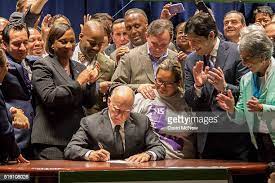
While California stands out as a progressive, pro-labor state, 27 other states across the nation have passed so-called “right to work laws.” Right-to-work laws claim to end “forced” unionism but they really “tilt the balance toward big corporations.” Need a source? How about Martin Luther King’s speech on right to work laws in 1961:
In our glorious fight for civil rights, we must guard against being fooled by false slogans, such as ‘right to work.’ It is a law to rob us of our civil rights and job rights. Its purpose is to destroy labor unions and the freedom of collective bargaining by which unions have improved wages and working conditions of everyone…Wherever these laws have been passed, wages are lower, job opportunities are fewer and there are no civil rights. We do not intend to let them do this to us. We demand this fraud be stopped. Our weapon is our vote.
The Future of the Labor Movement
Where does the labor movement in California and the United States go from here? Labor organizing has always been challenging, but recent Supreme Court decisions are making labor victories even more elusive. One way to secure labor rights nationwide would be to pass the PRO Act. Endorsed by top labor groups, the PRO Act would gut right-to-work laws, compelling workers who benefit from collective bargaining efforts to pay for their representation. It would also ban employers from holding meetings to “educate” their workforce about how unionization would affect the company. These meetings are usually an amalgamation of scare tactics and threats that discourage people from joining unions. The PRO Act would increase union representation, and put us on the road to less wealth inequality.
However, the PRO Act would need 60 votes in the United States Senate to overcome the filibuster, a herculean task. Unless President Biden and congressional leaders decide to reform the filibuster, the PRO Act will not pass anytime soon.
In recent months there has been some exciting news. A new Gallup poll shows public support for unions at 68%, the highest since 1965. Due to a labor shortage stemming from the COVID-19 pandemic, workers are back in the driver’s seat. Workers at John Deer, Kaiser Permanente and Kellogg have all gone on strike recently. Amazon workers in Bessemer, Alabama fought a year-long battle for unionization and were perhaps cheated out of a union by Amazon’s potential violations of union election rules. While victories may only come once in a blue moon, labor activists have learned to celebrate every success.
Fix what’s broken: Supreme Court Reform
Another idea that is becoming more popular is Supreme Court reform. Many liberals and leftists believe that two Supreme Court seats were stolen by the Republican Party. After Justice Scalia’s death in 2016, Majority Leader Mitch McConnell refused to hold hearings on Merrick Garland, President Obama’s pick for the Supreme Court, for 9 months. To add insult to injury, after Ruth Bader Ginsburg’s death, McConnell and President Trump rammed through Amy Coney Barrett’s nomination just days before the 2020 election.
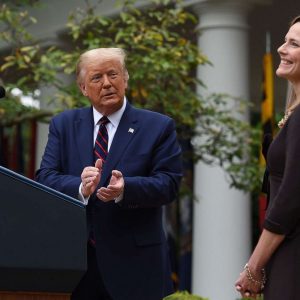
This court is more conservative than ever, and that spells trouble for labor groups. Many ideas have been floated for Supreme Court reform but the two most popular are expanding the Supreme Court and/or setting term limits for justices.
The Constitution doesn’t prescribe a set number of justices to sit on the Supreme Court. The number of justices has varied throughout the nation’s history. President Biden and Congress could expand the court to thirteen justices, and appoint four liberal justices. Advocates of this proposal point to the fact that five of the conservative justices currently sitting on the court were appointed by presidents who did not win the popular vote. Expanding the court would ameliorate this disparity and return the Court to the will of the people. Detractors of expanding the Court say that it would diminish the integrity of the Supreme Court in the eyes of the public as a fair arbiter.
The Constitution states that justices may serve “in times of good behavior,” which has essentially come to mean life terms. This creates a morbid dynamic where one ideological group hopes for the death of a supreme court justice with opposing views. The American Constitution Society recommends 18 year term limits, which would solve this problem of justices feeling obligated to serve to their last breath.
National action needs to take place in order to protect the victories of organized labor and set labor up for future success. We need congressional legislation to increase union power and Supreme Court reform. Until then, California has an obligation to continue to be a nationwide leader in union organizing, showing other states how unions can deliver economic justice to workers and confront key issues like climate change and healthcare affordability.
Featured Image Source: Reed Yalisove
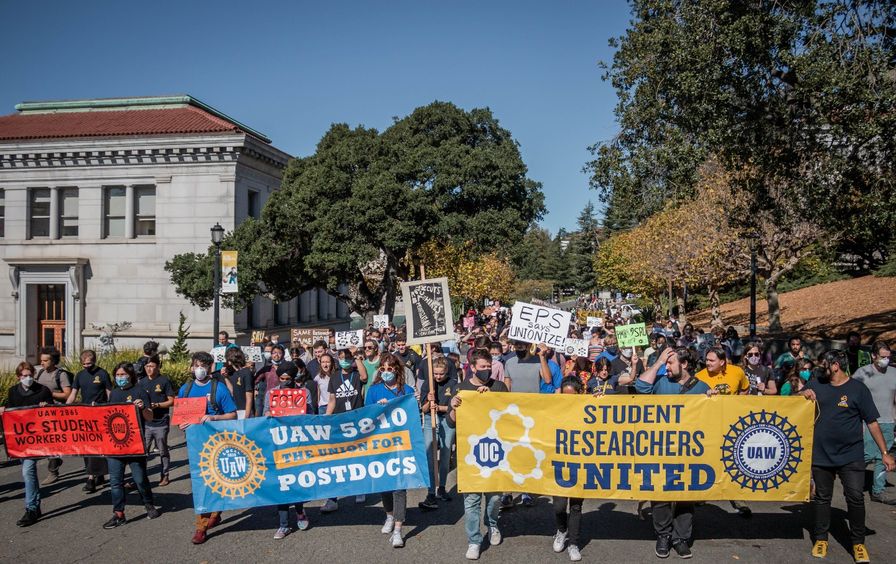




Comments are closed.